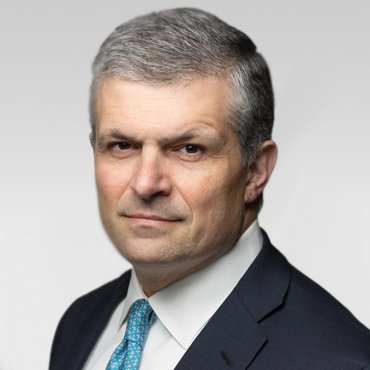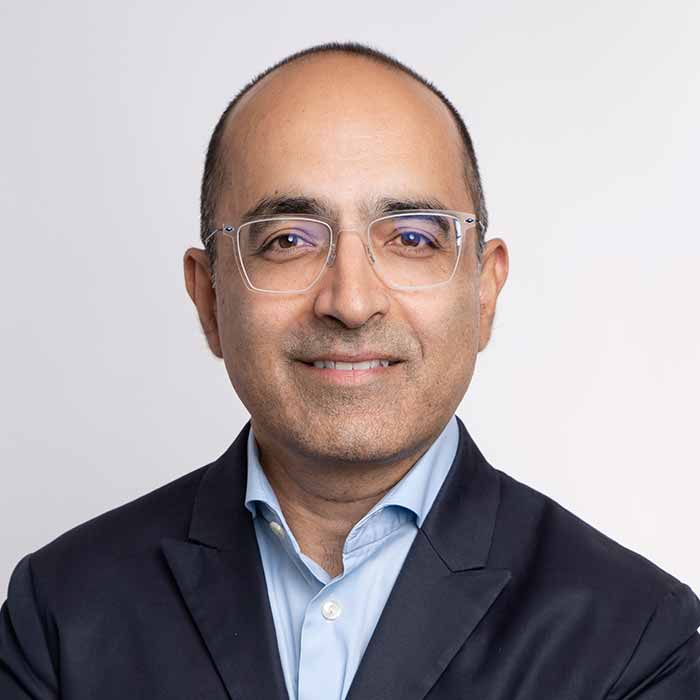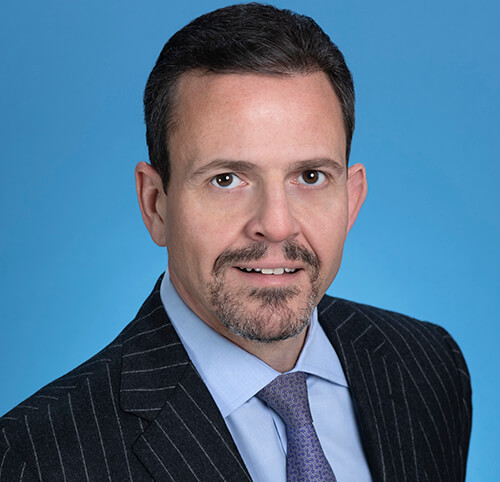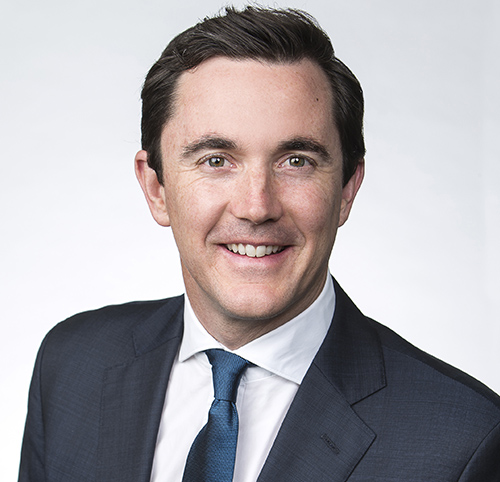How are capital markets responding to policy changes and geopolitical risks?
Vito Sperduto: While we've seen strong deal activity, the dynamics driving issuance and financing strategies are shifting. Market windows are opening and closing quickly. Sponsors are adapting to a more constrained M&A environment, and capital providers are recalibrating where and how they deploy funds.
John Cokinos: Investors and sponsors are trying to understand the situations where they'll be less susceptible to day-to-day headlines. The loan market just surpassed the loan activity that we saw in this period last year, but the high-yield markets are about 30% behind, because of all the pull-through that we saw in ‘24 ahead of ’25.
Rob McCormack: In debt capital markets, U.S. credit spreads have, surprisingly, been anchored at almost 20-year levels. And volumes year to date are running at around $370 billion, only 3.5% below where we were this time last year, which was a record year.
Nitin Babbar: Volatility has put a bit of a pause on the IPO market. So far in 2025 we’ve only seen 15 IPOs. Our expectation is, as always, markets will look through volatility, and there will be an opportunity for many issuers to put their filings up and monitor markets for the right window.
“Sponsors are adapting to a more constrained M&A environment, and capital providers are recalibrating where and how they deploy funds.”
Vito Sperduto, Head of RBC Capital Markets, U.S.
How are issuers weighing debt vs. equity financing in this environment?
Cokinos: We're still seeing plenty of portfolio companies that are just looking to do debt-fueled acquisitions for growth. But if we do see a slowdown in the economy, that will limit the ability to use debt exclusively for acquisitions when looking at new transactions and new LBOs.
McCormack: In the investment grade market, we’re seeing an increase in hybrid capital issuance. We’re seeing many more bespoke structures, as people look to access really buoyant issuance conditions.
Babbar: We're absolutely seeing M&A as a catalyst for equity issuance. It’s happening less frequently, but in big-scale transactions.
Interestingly, the biggest dynamic in the IPO market is that it has evolved from a financing transaction to more of a liquidity transaction. As companies stay private longer, they come to the market as profitable companies, so their focus is more on liquidity than funding needs.
“We’re seeing many more bespoke structures, as people look to access really buoyant issuance conditions.”
Rob McCormack, Global Head, Debt Capital Markets
How have rate differentials affected global bond issuance trends?
McCormack: Year to date, we've seen a 20% increase in volumes we've underwritten in offshore markets. We've certainly seen an increase in U.S. companies issuing in the euro market. The liquidity and the added diversification are just some of the benefits of accessing that market.
Cokinos: The last 12 to 18 months have been very busy in terms of cross-border financing activity, and we've been at the forefront of several transactions. We have seen our sponsor clients continue to look at global transactions, wanting to optimize their cost structures but also buy the best companies available.
As higher rates make traditional deals more expensive, what creative solutions are available?
Sperduto: We've seen an evolution in how corporates and sponsors approach capital structure decisions. Sponsors are increasingly relying on private credit, structured deals and alternative financing solutions.
Cokinos: Private credit has taken the role of traditional middle market lending for smaller companies that need more patient capital versus a liquid, traded marketplace. Fundamentally, the financial sponsor community is driven by cost of capital. But I do think they will ebb and flow between private credit and broadly syndicated, depending on cost of capital and the health of those corresponding markets.
McCormack: The business development companies (BDCs) have been extremely active already this year. That’s due to the increase in capital requirements from that sector and the increase in the number of BDCs coming to market.
Babbar: The strength of the block market is critical. In assessing the viability and the attractiveness of an IPO, most sponsors want to understand their path to broader liquidity post-IPO.
“The strength of the block market is critical. In assessing the viability and the attractiveness of an IPO, most sponsors want to understand their path to broader liquidity post-IPO.”
Nitin Babbar, Global Head, Equity Capital Markets
How is investor behavior changing?
Sperduto: With capital sitting on the sidelines, investors are being more selective in where and how they deploy funds. Some are favoring specific financing structures, while others are waiting for more conviction.
Cokinos: Loan investors are comforted that we survived the Fed rate hike rate cycle and did not have a recession, and also that CLO activity and liabilities have become more attractive. The high yield side of things will be driven more by the volatility in debt as well as in the equity markets.
McCormack: There is ample opportunity for investors to deploy capital, and we've seen real money come in very aggressively when we launch transactions for well-known, high-quality names.
Interestingly, we're seeing hedge funds come in. Hedge funds coming into an investment grade deal may look to move out of that position relatively quickly, but the tone is shifting, and there is a lot more ‘buy and hold’ sentiment among hedge fund clients.
Babbar: The convertible market has been quite robust and we expect demand will continue to grow. It’s an obvious place where issuers can bring down their cost of debt financing and capital, and investors get an opportunity to purchase something interesting with a yield and upside potential.
Sperduto: I think the investor community is prioritizing quality and structure, and the key for our issuer clients is to align where demand is strongest.
Where is the biggest demand for cross-product solutions?
Cokinos: We have seen our more sophisticated private equity clients try to marry various disciplines. They are always thinking about ways to make sure they have the best capital structure to drive their returns and get the right outcome.
Babbar: We think on a global basis. The massive $4 billion follow-on transaction we worked on recently for Goldman Group is an example. It has a focus of investors in the APAC region, but significant investors in Europe and also in the U.S.
“We have seen our more sophisticated private equity clients try to marry various disciplines.”
John Cokinos, Global Head of Leveraged Finance and Capital Markets
What is on the horizon for capital raising as 2025 progresses?
Cokinos: Whether it's DCM, ECM or Leveraged Finance, we're working on more projects than I've ever seen since I've been here where we are marrying all three of our product disciplines and cooperating in ways to deliver solutions for our clients in optimized capital structures. We have rates that have come down, and we had very cooperative markets, so we do expect that, plus the pent up capital on the private equity side that needs to get put to work, to lead to a pretty successful 2025.
McCormack: I think in 2025 we'll continue to see elevated issuance volumes right across the investment grade space and across jurisdictions, it's already playing out to be a year that may indeed top 2024’s issuance levels. I think the final thing I'd say is the firm is coming off a record Q1 performance, and we're seeing our presence in the various markets stronger than ever. Clients are looking to us for advice and expertise, and the breadth and depth of the teams we have across the jurisdictions, is really helping us to be there for clients and provide expert, seamless global advice as we look to a really busy 2025.
Babbar: Our expectation is that we're going to see volumes up 10 to 20% over the course of the year. It’s probably going to be back end loaded, but we see all the components of success in ECM markets. It’s been a tough start, but people continue to be constructive about a positive outcome in 2025.



